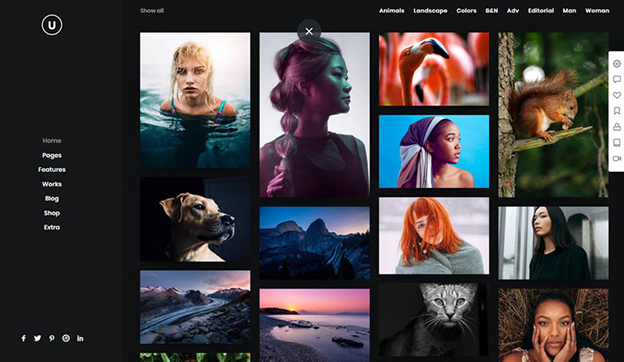Your photography portfolio is your chance to show off the best of your talents. It needs to be carefully curated and artfully presented in order to make a great first impression. Whether you’re a hobbyist or a seasoned pro, having an eye-catching portfolio is essential to success in the photography world.
While each portfolio will differ depending on the photographer’s specialties, there are a few tried-and-true tricks that can help you create an especially memorable portfolio.
Choose Your Platforms Wisely:
Once you have your portfolio all set, it’s time to share it with the world. Do some research into which platforms are best suited for your work and decide where you want to showcase your portfolio. It helps to pick a few different outlets so that you can expand your reach and make sure that anyone looking for quality photography can find you. If you don’t want to rely on any platforms, you may also host your own portfolio website.
Choose Your Best Work:
It’s important to make sure that the photos you choose for your portfolio are truly reflective of the best work that you have produced. It’s natural to be attached to certain images, but it’s more important to create a portfolio whose overall quality is above reproach. Consider taking an objective look at your work and assessing which photos stand out to the viewer. Your portfolio should showcase your strengths, so make sure that you are presenting the images that best convey those talents.
Organize Your Portfolio:
A well-organized portfolio is easier for a viewer to navigate. Think about how you want to display your photographs – do they look better organized by location or by experience? You can also organize them chronologically, such as the date they were taken. Grouping images together by a common element helps to create a visual thread that connects different photos and makes it easier for viewers to see the portfolio in its entirety.
Include Descriptions:
Descriptions of your work are helpful for people to understand the context of your photos. You can also include any other relevant details, such as where and when you took the photograph. This gives the portfolio a layer of depth beyond just the visuals and helps viewers gain insight into your creative process. Plus, including descriptions can help your portfolio show up in more online searches, which increases your visibility and reach.
Be Creative with Formatting:
How you choose to present your portfolio is essential to making it stand out. You can mix up the size of your images or use a combination of different visual elements like video and animation to give viewers a unique experience. If you’re feeling adventurous, try incorporating 3D elements into your portfolio as well! It will give you the opportunity to push your creative boundaries and wow viewers.
Seek Feedback:
When you feel like you have completed your portfolio, it’s time to seek feedback. Ask someone who understands the art of photography and has an eye for composition to give you their honest opinion. Knowing how your work is received outside of yourself can be very helpful in determining what works best when creating a portfolio that stands out. You could also enter an online photo contest and send your entries to see how people react to your work.
Conclusion:
Creating a portfolio that stands out doesn’t have to be difficult. With the right combination of careful curation, creative presentation, and honest feedback from fellow photographers, you can showcase your photography in all its glory and make a lasting impression.

